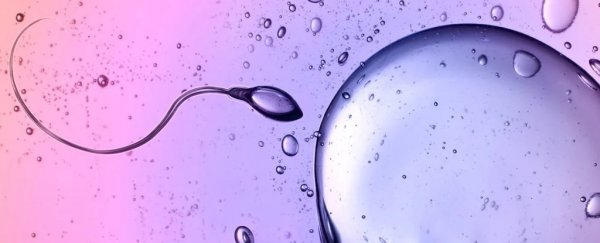With their whip-like tails, human sperm propel themselves through viscous fluids, seemingly in defiance of Newton's third law of motion, according to a new study that characterizes the motion of these sex cells and single-celled algae.
Kenta Ishimoto, a mathematical scientist at Kyoto University, and colleagues investigated these non-reciprocal interactions in sperm and other microscopic biological swimmers, to figure out how they slither through substances that should, in theory, resist their movement.
When Newton conceived his now-famed laws of motion in 1686, he sought to explain the relationship between a physical object and the forces acting upon it with a few neat principles that, it turns out, don't necessarily apply to microscopic cells wriggling through sticky fluids.
Newton's third law can be summed up as "for every action, there is an equal and opposite reaction". It signifies a particular symmetry in nature where opposing forces act against each other. In the simplest example, two equal-sized marbles colliding as they roll along the ground will transfer their force and rebound based on this law.
However, nature is chaotic, and not all physical systems are bound by these symmetries. So-called non-reciprocal interactions show up in unruly systems made up of flocking birds, particles in fluid – and swimming sperm.
These motile agents move in ways that display asymmetric interactions with the animals behind them or the fluids that surround them, forming a loophole for equal and opposite forces to skirt Newton's third law.
Because birds and cells generate their own energy, which gets added to the system with each flap of their wings or whip of their tails, the system is thrust far from equilibrium, and the same rules don't apply.
Ishimoto and colleagues analyzed experimental data on human sperm and also modeled the motion of green algae, Chlamydomonas. Both swim using thin, bendy flagella that protrude from the cell body and change shape, or deform, to drive the cells forward.
Highly viscous fluids would typically dissipate a flagellum's energy, preventing a sperm or single-celled algae from moving much at all. And yet somehow, the elastic flagella can propel these cells along without provoking a response from their surroundings.
The researchers found that sperm tails and algal flagella have an 'odd elasticity', which allows these flexible appendages to whip about without losing much energy to the surrounding fluid.
But this property of odd elasticity didn't fully explain the propulsion from the flagella's wave-like motion. So from their modeling studies, the researchers also derived a new term, an odd elastic modulus, to describe the internal mechanics of flagella.
"From solvable simple models to biological flagellar waveforms for Chlamydomonas and sperm cells, we studied the odd-bending modulus to decipher the nonlocal, nonreciprocal inner interactions within the material," the researchers conclude.
The findings could help in the design of small, self-assembling robots that mimic living materials, while the modeling methods could be used to better understand the underlying principles of collective behavior, the team adds.
The study has been published in PRX Life.
